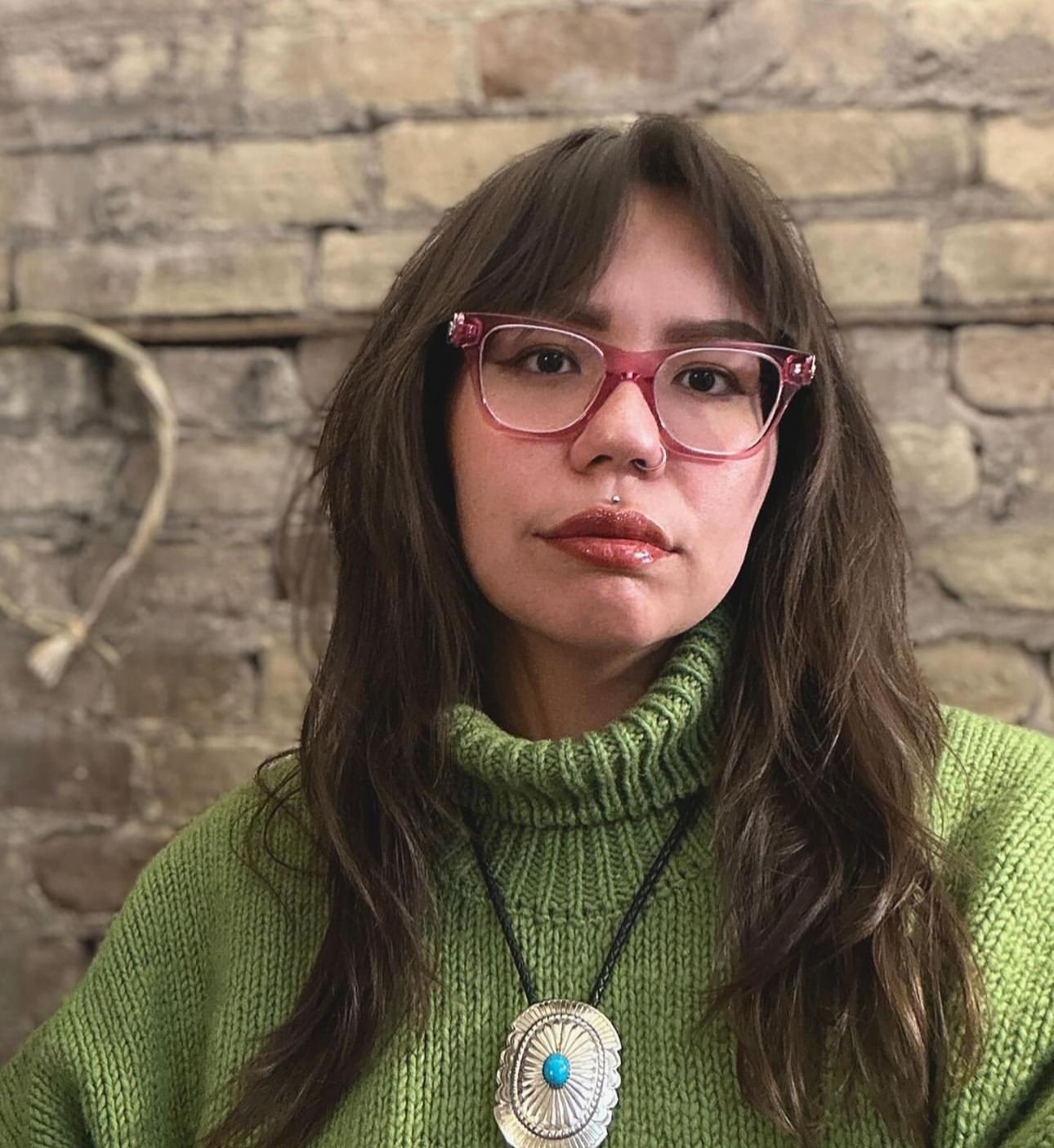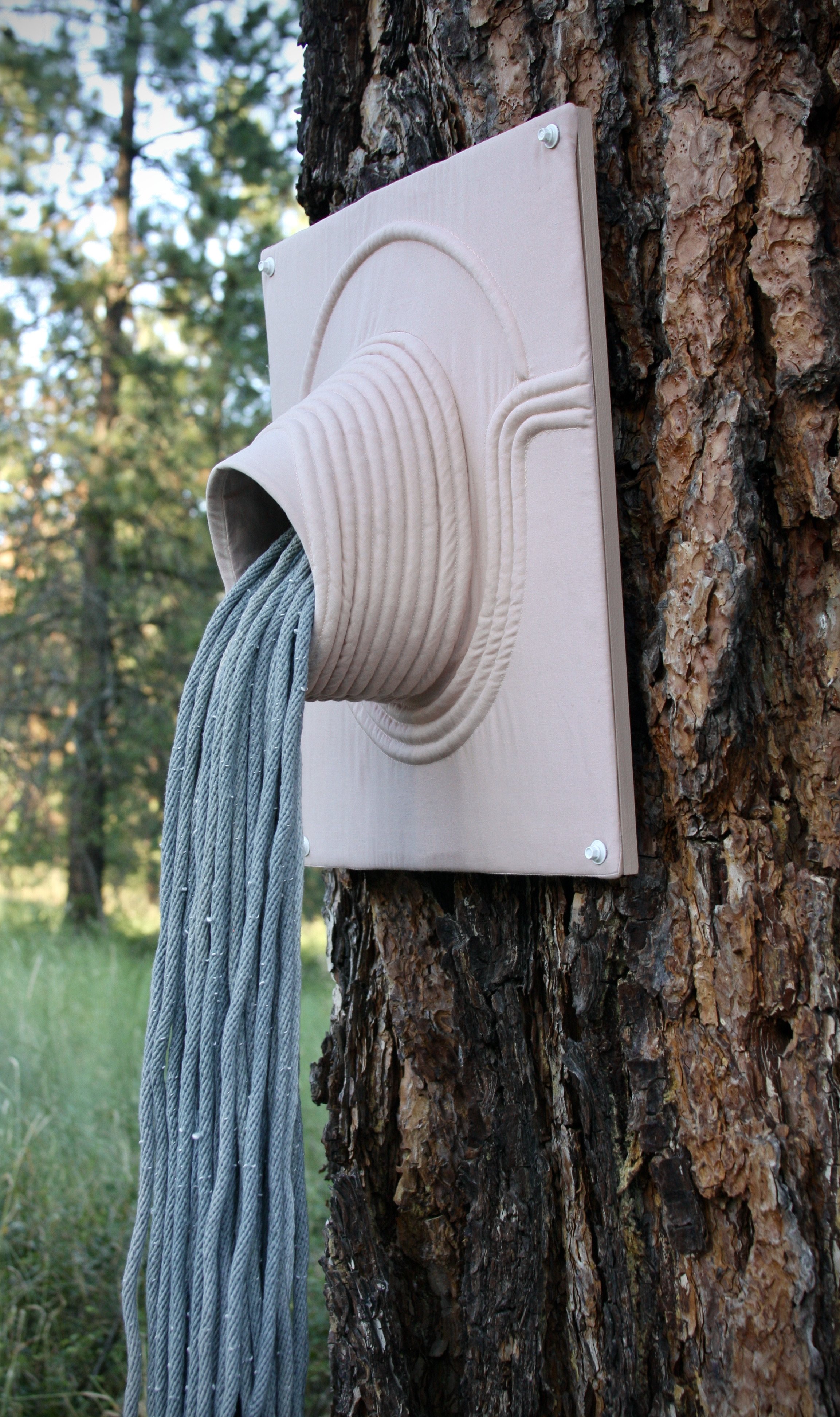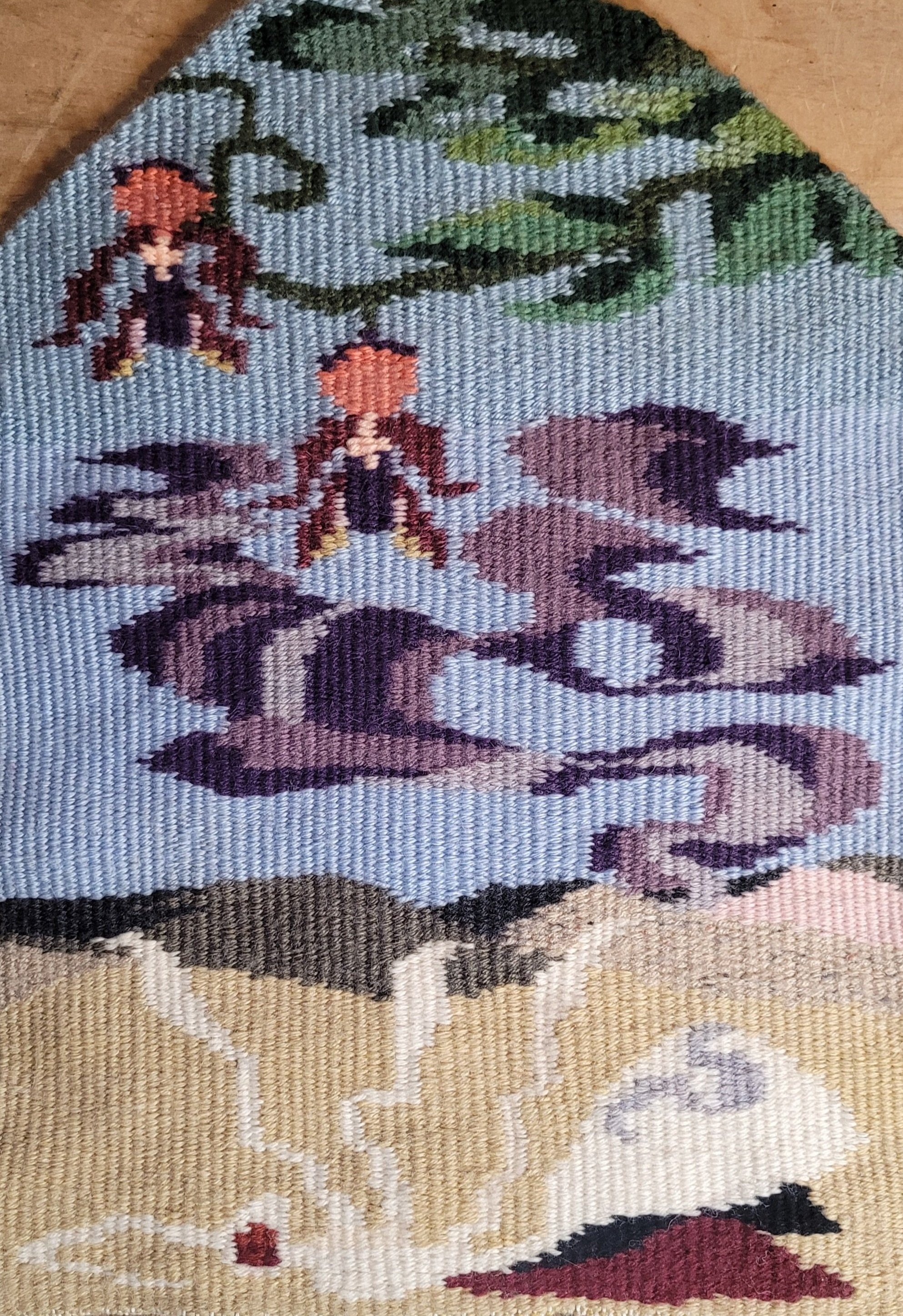Art Mobile: Textiles
Selected Collection of works from the Art Mobile Textile Group exhibition
And Still the Sky Wanted More
Yarn, Seed Pods, Thread
2024
Charlie Dov Schön
My practice exists at the intersection of fiber, spirituality, and science. I weave, sew, and assemble garments, sculptures, and wall hangings that reference legacies of Jewish craft, contemporary politics, and data collection. My work accumulates found objects as a measure of time and documents contemporary ritual as both holy and quantifiable. I am interested in spiritual objects operating as data collectors and scientific practice operating as prayer.
Sky (a record of apparitions)
wool dyed with indigo, cochineal, marigold & avocado
2024
Taylor Leigh
I made this piece on a traditional Zapotec floor loom while I was visiting Oaxaca several months ago. I learned how to operate this loom from a generous and experienced weaver named Susie in the renowned weaving village Teotitlán del Valle. Unlike most floor looms I've seen in the US, these are standing looms that a person operates by balancing on two wooden boards that look like skis. By shifting weight onto one of the boards, the weaver shifts the heddle and then slides a boat-like shuttle through the warp. When this process really gets moving, the way it feels is like doing some sort of a dance - it's rhythmic & meditative. It was a joyful experience to make this piece and was inspired by a deep love for the place I'm grateful to call my home.
Wewi
Czech beads, nylon thread, stabilizer, brain-tanned smoked deer hide, paper.
2024
Salisha Old Bull
I chose to bead a meadowlark, which is special in both Bitterroot Salish and Absaaloke cultural histories and indicates different pieces of knowledge. For the Bitterroot Salish, the meadowlark, or Wewi, is known to tell the news. Stories about Wewi can be heard in the wintertime. For the Absaaloke, the meadowlark, or baaúuwatshiile, is considered a blessing if it resides by your dwelling. This bird is also the state bird for Montana.
Melissa Thompson
Through stream of consciousness type of making, I am able to build character and folkloric back story into my creatures. When each has a unique set of material combinations, they invite the viewer to use their own stream of consciousness to wonder as to who these creatures are. They will speak to each person differently and that is what I am hoping for, rather than telling the viewer the story behind the creature.
Creator's Favorite, The Walker, American Prairie
Seed Beads, Baseball hats
2024
Delia Touche
I received one of the hats during my residency with American Prairie. This is the first hat I decided to bead. I wanted to adorn it with beads as a way of Indigenizing the merch I received and make it my very own. I have started collecting various hats from the places I've visited and have called home. My understanding of home goes beyond colonial/state borders. It's a way I can take a piece of the different homes I have.
Conduit
Cotton, thread, rope, felt, steel roof pipe, foam, dye, clothesline, wood, paint.
2020
Emily Stark
Stark engages in a process-focused practice that emphasizes craft and detailed surfaces. Her work is rooted in fiber and consists of soft sculptural objects, garments, and woven structures. She loves to dress and adorn armatures, both to mask and to reveal inner landscapes and visceral states. Stark is influenced by occult and contemplative practices, science fiction, and gender studies. She explores how we experience materials—both in a felt sense, and as complex carriers of histories, and how the systems and norms we are entangled in influence our emotions, relationships, and attachments.
Tracy Hall
Philosophers Deleuze and Guattari described the concept of wasp and orchid as a branching, rhizomatic relationship where "the orchid leaves its own territory by forming an image, by imitating a wasp; but the wasp returns to its territory in this image while leaving its turf at the same time and becoming part of the orchid’s reproduction apparatus."
The concept explores relationships between beings or things that may not have clear boundaries or rule sets; the natural world is a space where we can often find those types of unconventional relationship structures and rethink the way we relate to our surroundings. I chose to depict an orchid and a wasp as a way to meditate on these themes.
A Thousand Plateaus
yarn and twine
2024
Nico Larsen
Nico Larsen uses handwoven tapestry, watercolor, and drawing to explore themes of birth, mysticism, and nature. Currently, her focus is on the burrow as an image for a body pierced by new growth and regeneration. The burrow can be a void and a place of discovery.













